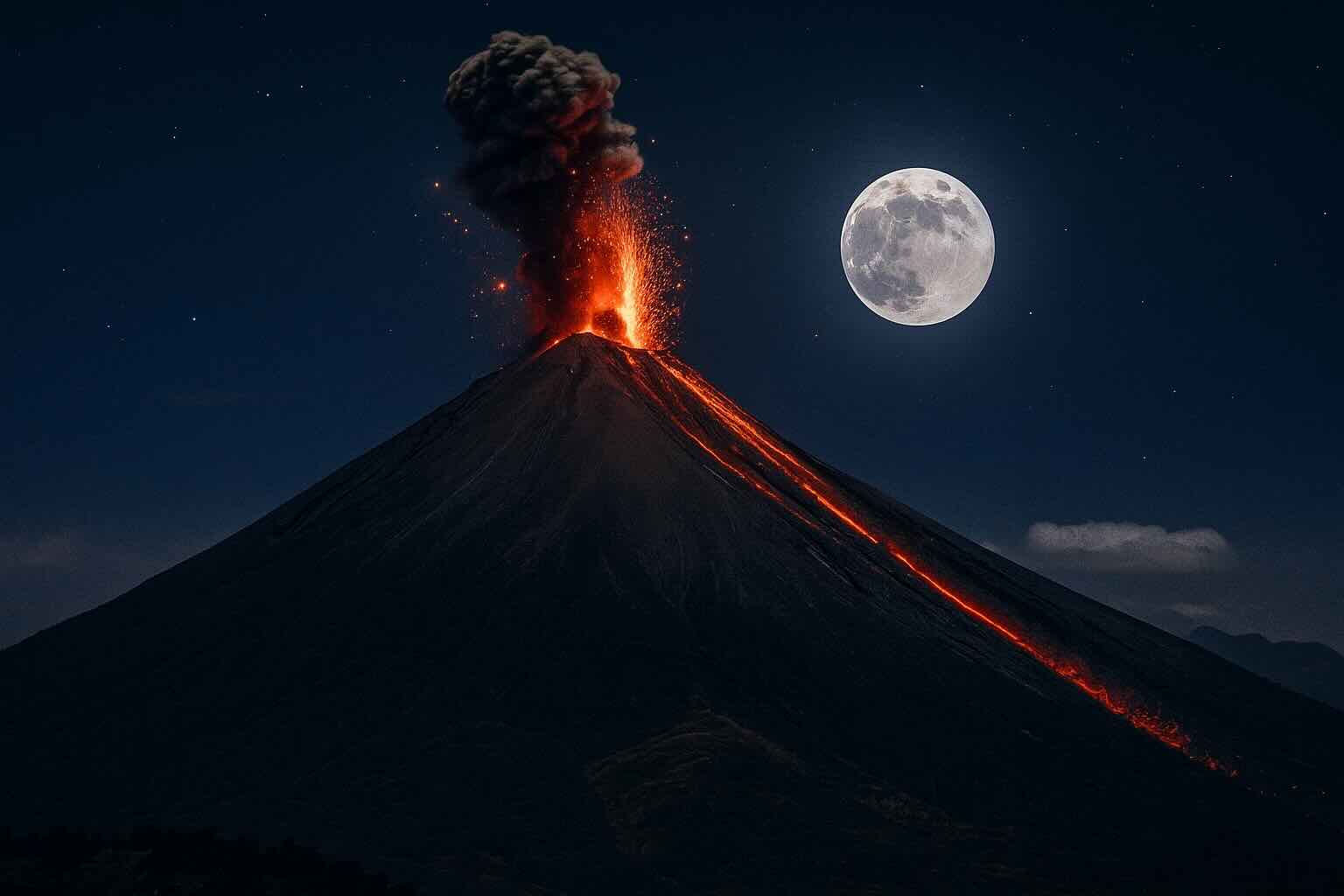When we look at the moon, we often see a calm, glowing companion. Yet, this silent sphere has been shaping Earth since its violent birth. From the tides that wash our shores to the slow movements of our planet’s crust, the moon’s gravitational pull has left a permanent fingerprint on our geology. Scientists are now uncovering surprising ways in which the moon may even influence volcanoes and earthquakes.
The Violent Birth of the Moon
To understand the moon’s geological role, we must first look at its origin. The leading theory suggests that about 4.5 billion years ago, a Mars-sized object slammed into early Earth. The impact was catastrophic, flinging molten rock into orbit. Over time, these fragments coalesced into the moon we see today.
This colossal event changed Earth forever. The collision tilted Earth’s axis, giving us seasons, and the moon’s gravitational influence stabilized that tilt. Without the moon, our climate might swing chaotically, making life far more difficult to sustain.
Tidal Forces Beneath the Surface
The moon’s most obvious influence is on tides, but tides do not stop at the ocean’s surface. Beneath Earth’s crust, the moon’s pull slightly flexes rock layers, creating what scientists call “solid Earth tides.” These subtle deformations stretch and compress the planet’s interior, sometimes by several centimeters.
Though small, these stresses accumulate over time. In certain regions, especially where tectonic plates grind together, the moon’s gravitational tug may be enough to trigger geological events already on the edge of happening.
The Moon and Volcano Activity
Could the moon actually awaken volcanoes? Research suggests it might. Some volcanic eruptions appear to cluster around specific tidal cycles, particularly during new and full moons when Earth, moon, and sun align. During these alignments, tidal forces are strongest, adding extra stress to magma chambers deep below the surface.
For example, studies in Hawaii and Iceland — two volcanic hotspots — have found correlations between increased volcanic activity and peak tidal stresses. While the moon does not cause eruptions outright, it may act as a trigger when underground pressure is already critical.
Lunar Links to Earthquakes
Like volcanoes, earthquakes also show possible links to lunar cycles. Certain fault lines appear more active during spring tides, when the gravitational pull of the moon and sun combine. In Japan and California, seismologists have noted a slight rise in earthquake probability during these phases.
It’s important to clarify: the moon cannot create massive earthquakes on its own. But in regions already under intense tectonic stress, lunar forces may provide the final nudge. Think of it as a hand tapping on a domino that was already leaning.
The Moon and Earth’s Rotation
The moon’s influence goes beyond tides and tremors. Its gravitational pull has been gradually slowing Earth’s rotation for billions of years. When the moon first formed, a day on Earth lasted just 5 hours. Today, it lasts 24. Each century, our days grow about 1.7 milliseconds longer due to the moon’s drag.
This slowing rotation alters how Earth’s molten core moves, which may indirectly affect our magnetic field. In this way, the moon plays a role in protecting life by helping maintain the shield that deflects harmful solar radiation.
A Stabilizing Force for Climate and Life
Geology is only part of the story. The moon’s steady pull has also stabilized Earth’s axial tilt, keeping it at about 23.5 degrees. Without this stability, Earth’s tilt could wobble chaotically over millions of years. That would lead to extreme climate swings, ice ages, and unstable conditions for life.
By anchoring our tilt, the moon has given Earth a stable climate long enough for complex ecosystems — and humans — to evolve.
Modern Science and Lunar Mysteries
Today, satellites and seismographs allow scientists to study these lunar influences in detail. Missions like NASA’s Lunar Reconnaissance Orbiter continue to reveal the moon’s own geological history, while Earth-based studies connect lunar cycles with volcanic and seismic data.
Yet mysteries remain. How much of a role does the moon truly play in triggering eruptions? Could its pull be used to predict earthquakes more accurately? Researchers are still unraveling these questions, blending astronomy, geology, and climate science into one story.
Looking Toward the Future
As humanity prepares to return to the moon with new missions, understanding this relationship becomes more than academic. Colonies or research stations on the moon may offer new vantage points for studying Earth’s tectonic systems. In time, the moon could help us better forecast natural disasters that affect millions of people worldwide.
What began with a cataclysmic impact 4.5 billion years ago continues today as a quiet partnership. The moon shapes Earth’s oceans, stresses its crust, and stabilizes its axis. It is not just a glowing satellite in the night sky, but a geological partner that has helped shape the Earth we know.
Conclusion: Earth’s Silent Sculptor
The moon is more than a companion — it is a sculptor of Earth’s past, present, and future. From volcanic rhythms to the slowing of our days, its gravitational hand is always at work. By studying this hidden connection, we see how the cosmos and our planet are forever linked. Without the moon, Earth itself might have been a very different world.
